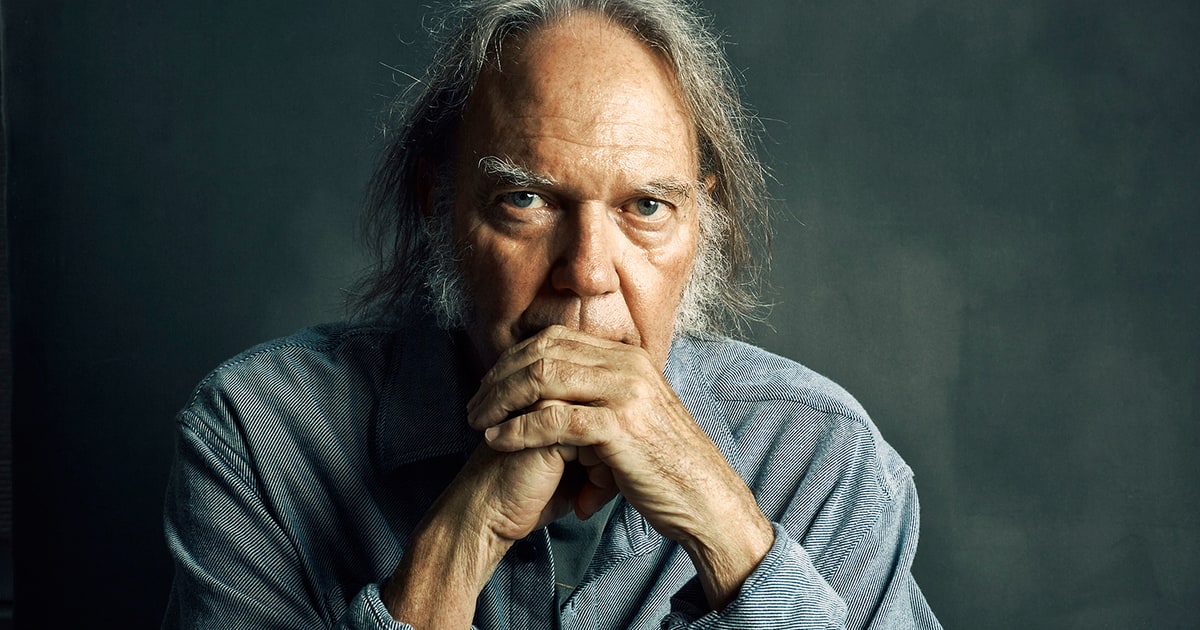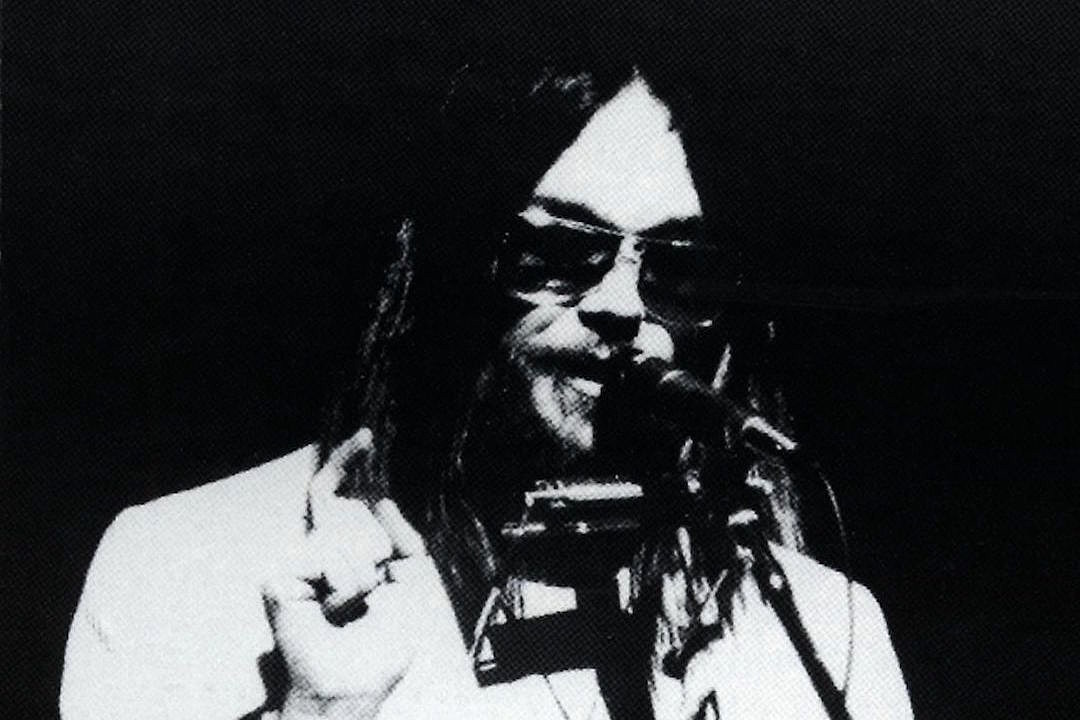The Word is Turning: Neil Young in Three Parts
Bob Dylan once sang that he was "listening to Neil Young". The proper response? You gotta turn up the sound.
Neil Young: the dinosaur hippie, is made up of the quiet, windswept Canadian plains, dark L.A nights on the beach, and foot stompin' chaos (via his sloppy, choppy, and heavy band Crazy Horse) in equal parts. There's much so to Neil Young's 40 plus year discography that deserves exploring, but here, we'll zoom in on three of Neil's "working models" that provide some insight into the man's musical output.
The quiet, starkly beautiful, and windswept Canadian plains offer the impetus for Neil Young's best and most focused acoustic offerings. These Young tunes are best exemplified by albums like Harvest, Comes a Time, Harvest Moon, and Prairie Wind. "Old Man", off of 1972's Harvest, sets the gold standard for Young's slower, more meditative offerings. Written for an elderly gentleman who lived on a ranch Young purchased, "Old Man" features Young's creaking, high pitched voice paired with a steady acoustic guitar and muted drums and bass. Plus, it is hard not to get introspective when listening to this one. It's hard not to think of your own father, whoever you are:
"Helpless", another quieter offering from our favorite Canadian, describes the north country with precise detail, as the "big birds flying across the sky" serve as the force that moves the song into a meditation on lost youth and forgotten loves. You'd think the slide guitar would render the song county. Instead, it's just beautiful.
Drinking from the cup of the 1960's culture (which turned into the viciously sad hangover of the 70's) and all the complications that it, and his celebrity, entailed, Neil Young dealt with the darkness, too. Members of his band, Crazy Horse, died of drug overdoses. The hippie dream died out in a haze of substance abuse, and Young was there to document the moment. His so called "ditch trilogy" (Tonight's the Night, On the Beach, and Zuma) lacked the hard edge of his rocking-ist Crazy Horse songs, but their sloppy rawness holds great, if not dark, appeal. Listen to Young meditate on dreams destroyed in the off-the-cuff "Tonight's the Night", where the raw emotion is palpable and the understated music is provides the framework to match the vibe:
"On the Beach", yet another title song, takes three simple guitar chords on the electric and rolls with it, painting the undercurrent of the 70's scene along the beach, so to speak, where we might find some dead fish and encounter the dead-scary characters that roam its parts. "The world is turning", Young sings, "I hope it don't turn away". Here, the lead guitar, bass, and drums follow the feeling- dejected, not urgent, slow, not frantic. I guess it ain't for the faint of heart.
One more thing: Neil Young has a kickin' band. Via the slow moving, fuzzed out grunge (before it was grunge) of Carzy Horse, Young explores his rockin' side, with riffs that meander long into the darkness, and stomp down like giant redwoods. Classic cuts like "Cortez the Killer" explored the halls of the museum, proving Young's idea of history is never far from his innate sense of people & their land. For some reason, I never mind listening to the long, melodic, and sloppy guitar solos. They are a thing of beauty:
Young would keep the Crazy Horse template handy throughout his career. 1996's underrated gem Broken Arrow featured Young & gang working out the melodies underneath the grit and fuzz of Crazy Horse running at full power. Case in point: "Scattered (Let's Think About Livin')", a deep cut from Broken Arrow that stands with any of his 70's work with his famed band:
There's much more to the Neil Young universe than what's included above. It's a sample. Still, I got to turn up the sound.
 |
| Young posing for Rolling Stone in 2016 |
The quiet, starkly beautiful, and windswept Canadian plains offer the impetus for Neil Young's best and most focused acoustic offerings. These Young tunes are best exemplified by albums like Harvest, Comes a Time, Harvest Moon, and Prairie Wind. "Old Man", off of 1972's Harvest, sets the gold standard for Young's slower, more meditative offerings. Written for an elderly gentleman who lived on a ranch Young purchased, "Old Man" features Young's creaking, high pitched voice paired with a steady acoustic guitar and muted drums and bass. Plus, it is hard not to get introspective when listening to this one. It's hard not to think of your own father, whoever you are:
"Helpless", another quieter offering from our favorite Canadian, describes the north country with precise detail, as the "big birds flying across the sky" serve as the force that moves the song into a meditation on lost youth and forgotten loves. You'd think the slide guitar would render the song county. Instead, it's just beautiful.
Drinking from the cup of the 1960's culture (which turned into the viciously sad hangover of the 70's) and all the complications that it, and his celebrity, entailed, Neil Young dealt with the darkness, too. Members of his band, Crazy Horse, died of drug overdoses. The hippie dream died out in a haze of substance abuse, and Young was there to document the moment. His so called "ditch trilogy" (Tonight's the Night, On the Beach, and Zuma) lacked the hard edge of his rocking-ist Crazy Horse songs, but their sloppy rawness holds great, if not dark, appeal. Listen to Young meditate on dreams destroyed in the off-the-cuff "Tonight's the Night", where the raw emotion is palpable and the understated music is provides the framework to match the vibe:
"On the Beach", yet another title song, takes three simple guitar chords on the electric and rolls with it, painting the undercurrent of the 70's scene along the beach, so to speak, where we might find some dead fish and encounter the dead-scary characters that roam its parts. "The world is turning", Young sings, "I hope it don't turn away". Here, the lead guitar, bass, and drums follow the feeling- dejected, not urgent, slow, not frantic. I guess it ain't for the faint of heart.
One more thing: Neil Young has a kickin' band. Via the slow moving, fuzzed out grunge (before it was grunge) of Carzy Horse, Young explores his rockin' side, with riffs that meander long into the darkness, and stomp down like giant redwoods. Classic cuts like "Cortez the Killer" explored the halls of the museum, proving Young's idea of history is never far from his innate sense of people & their land. For some reason, I never mind listening to the long, melodic, and sloppy guitar solos. They are a thing of beauty:
Young would keep the Crazy Horse template handy throughout his career. 1996's underrated gem Broken Arrow featured Young & gang working out the melodies underneath the grit and fuzz of Crazy Horse running at full power. Case in point: "Scattered (Let's Think About Livin')", a deep cut from Broken Arrow that stands with any of his 70's work with his famed band:
There's much more to the Neil Young universe than what's included above. It's a sample. Still, I got to turn up the sound.

Comments
Post a Comment